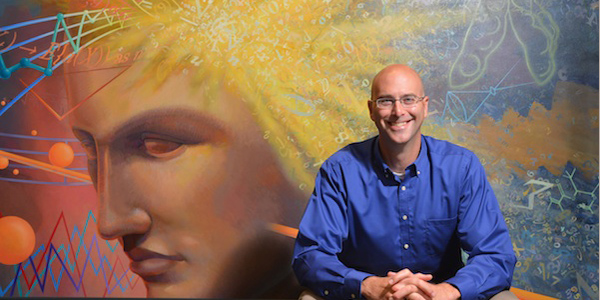
Uncovering Useful Truths, Digging Deeper With Statistics
The truth is out there, like fish waiting to be seined from a rising sea of scientific data. A key person casting the net is a statistician.
Not long ago, tracking one gene at a time was progress. Now scientists’ ability to collect and measure genetic data in agriculture has exploded. Data from tens of thousands of genes flow in simultaneously. Cutting-edge technologies allow scientists to peer under the hood of plants, animals and other organisms to understand what’s going on biologically and how genes function under different scenarios.
“Now the question is: How do we extract meaningful insights from these enormous datasets?” says Dan Nettleton, the Laurence H. Baker Endowed Chair in Biological Statistics and professor of statistics.
Nettleton, who collaborates with many teams of Iowa State agricultural scientists, says statisticians help to get at the truth by quantifying uncertainty. “Statisticians help to determine which explanations of the underlying reality are the most plausible based on the observed data. We work to help answer—as clearly as the data allow— the questions scientists pose.”
In his own research, Nettleton develops new, innovative ways to analyze data to help scientists draw better conclusions. Statistical methodology helps pan for gold in the sea of data, sorting out differences that are truly meaningful from those that are just due to chance variation. But all that glitters is not gold. Some data may appear pan-worthy, but may not necessarily be repeatable or scientifically meaningful.
“When you’re testing thousands of hypotheses, we need to make decisions on what results are truly worth our interest,” Nettleton says. “We want to control the proportion of results that are just artifacts of the fact you have loads of data.”
Statisticians—from the design of experiments to the analysis of data—help scientists get closer to useful truths, he says. “With all this data, we hope to make progress more quickly in developing soybeans that are more resistant to pathogens, corn that holds up better in drought or pigs that more efficiently use the feed they’re given.”
Historically, Iowa State has been a national leader in making statistics integral to agricultural research. In 1933, the Statistical Laboratory was the first of its kind. In 1935, the Experiment Station formed a statistical section, led by pioneer George Snedecor, to strengthen the marriage of statistics and agricultural research. The Experiment Station has supported statistics ever since.
Nettleton tries to quantify the uncertainty of future research. “Statistics must play a core role in the ‘Big Data’ era to develop new ways to analyze huge datasets. It’s not just about finding one needle in a haystack. We hope many needles are waiting to be discovered.”



